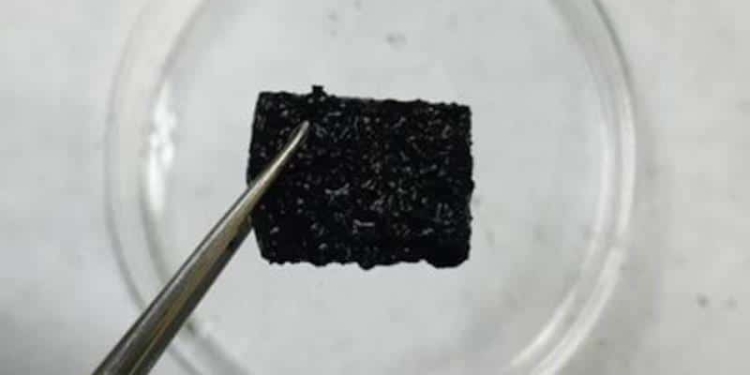source: Energy Harvesting Journal article
Researchers in the Cockrell School of Engineering at The University of Texas at Austin have developed a first-of-its-kind self-healing gel that repairs and connects electronic circuits, creating opportunities to advance the development of flexible electronics, biosensors and batteries as energy storage devices.
Although technology is moving toward lighter, flexible, foldable and rollable electronics, the existing circuits that power them are not built to flex freely and repeatedly self-repair cracks or breaks that can happen from normal wear and tear. Until now, self-healing materials have relied on application of external stimuli such as light or heat to activate repair. The UT Austin “supergel” material has high conductivity (the degree to which a material conducts electricity) and strong mechanical and electrical self-healing properties.
“In the last decade, the self-healing concept has been popularized by people working on different applications, but this is the first time it has been done without external stimuli,” said mechanical engineering assistant professor Guihua Yu, who developed the gel. “There’s no need for heat or light to fix the crack or break in a circuit or battery, which is often required by previously developed self-healing materials.” Yu and his team created the self-healing gel by combining two gels: a self-assembling metal-ligand gel that provides self-healing properties and a polymer hydrogel that is a conductor.
A paper on the synthesis of their hydrogel appears in the November issue of Nano Letters. In this latest paper, the researchers describe how they used a disc-shaped liquid crystal molecule to enhance the conductivity, biocompatibility and permeability of their polymer hydrogel. They were able to achieve about 10 times the conductivity of other polymer hydrogels used in bioelectronics and conventional rechargeable batteries. The nanostructures that make up the gel are the smallest structures capable of providing efficient charge and energy transport.
In a separate paper published in Nano Letters in September, Yu introduced the self-healing hybrid gel. The second ingredient of the self-healing hybrid gel is a metal-ligand supramolecular gel. Using terpyridine molecules to create the framework and zinc atoms as a structural glue, the molecules form structures that are able to self-assemble, giving it the ability to automatically heal after a break. When the supramolecular gel is introduced into the polymer hydrogel, forming the hybrid gel, its mechanical strength and elasticity are enhanced. To construct the self-healing electronic circuit, Yu believes the self-healing gel would not replace the typical metal conductors that transport electricity, but it could be used as a soft joint, joining other parts of the circuit. “This gel can be applied at the circuit’s junction points because that’s often where you see the breakage,” he said. “One day, you could glue or paste the gel to these junctions so that the circuits could be more robust and harder to break.” Yu’s team is also looking into other applications, including medical applications and energy storage, where it holds tremendous potential to be used within batteries to better store electrical charge. Yu’s research has received funding from the National Science Foundation, the American Chemical Society, the Welch Foundation and 3M.
image: University of Texas at Austin






























